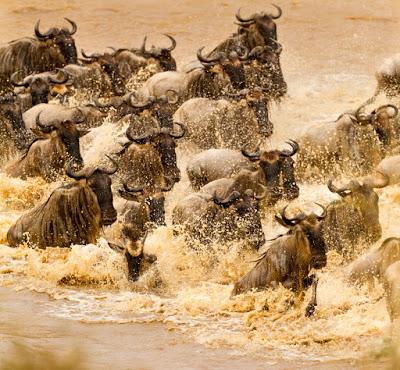
Migrating wildebeest crossing the Mara River, Tanzania, Africa
Our friend Owen Floody, who recently retired from a career of teaching and research at Bucknell University in Pennsylvania, has had the good fortune of being able to travel frequently. His trips have been divided between treks and safaris, reflecting his interests in seeing (and photographing) interesting landscapes and wildlife. Here is his report on his safari to Tanzania in late July and early August of 2017.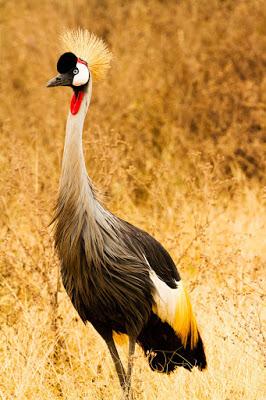
Grey-crowned crane
Though I have visited Africa many times, I never had focused on, or adequately seen, the Great Migration of more than a million wildebeest, zebra and other animals that is concentrated in Tanzania’s Serengeti National Park.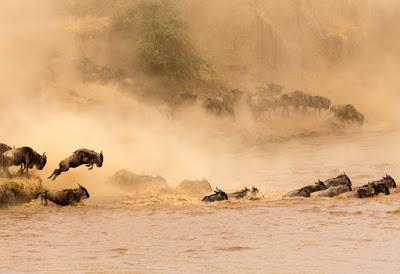
Wildebeest launching themselves into the Mara River to begin their crossing
In one sense the Great Migration is difficult to miss: Rather than being confined to a fraction of the year, its clockwise circulation of animals continues nearly year-round.Still, there are parts of the migration that are more dramatic than others and one of the most dramatic of all seems to be that at which the animals are forced to cross the Mara River, near Serengeti’s northern border.It is at this point that the wildebeest probably are at greatest risk of death due to drowning or predation by crocodiles.It is estimated that about 6,500 wildebeest drown in the Mara each year, injecting tons of nutrients into the river ecosystem in the process (Proceedings of the National Academy of Sciences, 114, 7647, 2017).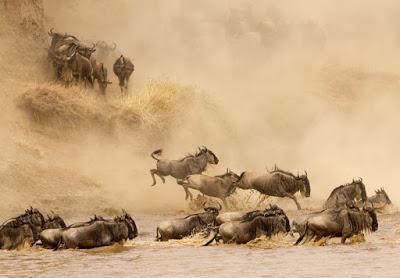
Wildebeest entering the Mara River
My desire to see a river crossing led me to work with Warrior Trails, my favorite Tanzanian tour operator, to plan a trip to the northern Serengeti in late July and early August, when crossing seemed likely.Our plan committed us to five nights at a tented camp within striking distance of the Mara. It seemed most prudent to give ourselves several opportunities to catch crossings, assuming that we had guessed right on the time of year.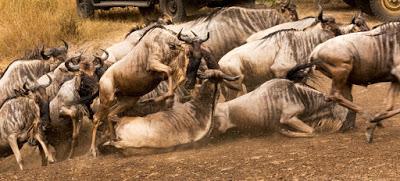
Wildebeest emerging from the river at the end of the crossing
So, did we see our crossing?Yes, we did, and on the second day of our time in the north.As crossings go, this seemed extremely benign: The river was low and slow, and the crocodiles must still have been digesting their meals from prior days as none of them made an appearance.Nevertheless, the crossing was one of the most exciting spectacles I have seen.And I did not feel cheated in the least by the uniform success of the animals we saw crossing: There was adequate evidence of past (and likely future) failures, and I did not really need to directly observe these.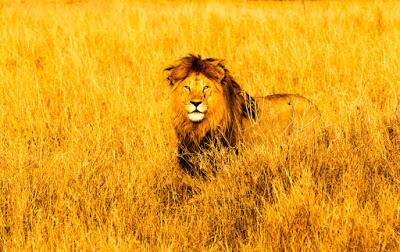
Lion
This focus made for a relatively simple itinerary.We flew into Kilimanjaro Airport, near Arusha, and essentially made a beeline for the northern Serengeti, a transfer that involved many hours of often dusty driving.Upon the completion of our time there, we returned to Arusha almost as directly.What terrible hardships we endured!Lest you feel too sorry for us, bear in mind that we made several stops en route, at Lake Manyara National Park and in the central Serengeti on the way north, in central Serengeti again and at the Ngorongoro Crater on the return.Also, bear in mind that Serengeti is varied and wonderful, possibly my favorite place in earth.What a privilege to be “forced” to spend a couple of weeks there.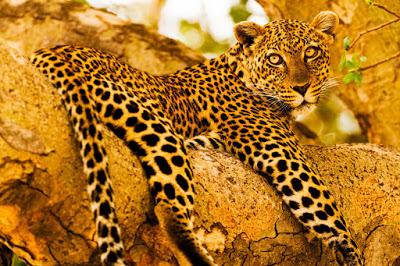
Female Leopard
Our early success freed us for a succession of game drives exploring different nearby parts of the Serengeti.It exposed us to some of the variety of habitats that the park incorporates and helped to put the Great Migration in context by contrasting areas that the migrating animals were vacating versus occupying.In addition, it provided us with the time we needed to find, view and enjoy some of the other wildlife (and scenery) for which the Serengeti is so famous.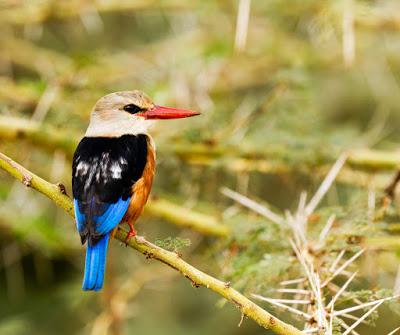
Grey-headed Kingfisher
In preparing for an African safari, I think it generally best to not become too invested in particular sightings: The chance element is too strong and there are too many wonderful things to be seen, any subset of which is likely to be thrilling.Altogether, our trip could not have been much more successful or pleasant.Note: A wildebeest is a large dark antelope with a long head, a beard and mane, and a sloping back. It is also called a gnu. All text and photos copyright Caroline Arnold at The Intrepid Tourist
www.theintrepidtourist.blogspot.com
